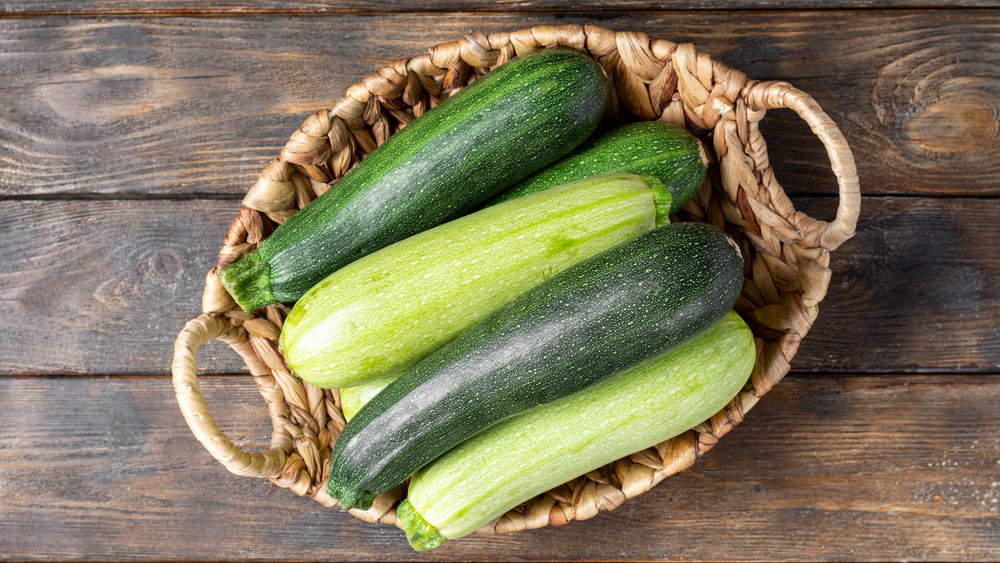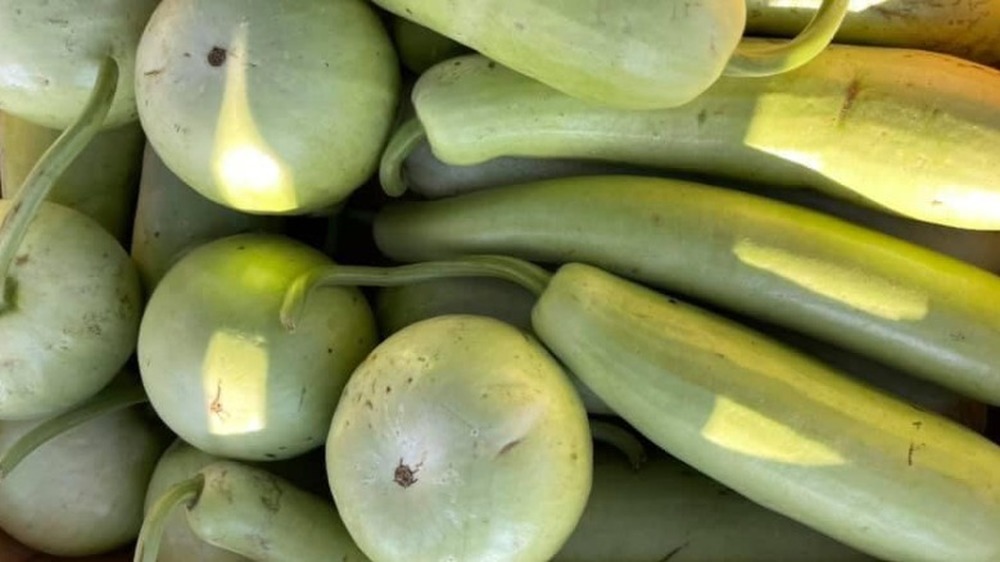The Subtle Difference Between White Zucchini And Green Zucchini
It's easy to understand why zucchini is so often found on American tables. Often served as a vegetable in the culinary sense (although it's technically a berry, according to Britannica), zucchini (Cucurbita pepo) are extremely versatile, low in calories and carbs, inexpensive to buy, and very easy to grow (via Lowe's).
Known as "courgettes" in the UK and France, according to Britannica, zucchini are a type of summer squash and part of the gourd family. They're grown specifically for their edible fruit. (And if you can grow your own or buy them from a farmer's market, zucchini flowers are also delicious when stuffed and fried, as demonstrated in this recipe by Giada De Laurentiis).
Although the zucchini we now eat were likely bred in late 1800s Italy, archaeologists have seeds from its ancestors in Mexico dating back to between 9000 and 4000 B.C. (via The Kitchen Project). The most common form of zucchini enjoyed today are dark green cultivars, such as the deeply-hued "Black Beauty," but there are actually dozens of varieties you can buy or grow from seeds. Another option that may not be so familiar are white zucchini, which contain a few similarities and differences in comparison to their dark green counterparts.
White zucchini are actually pale green
Although dark green varieties are the most commonly sold and grown in the U.S., zucchini come in many varieties and colors (via Home Stratosphere), including variations of yellow and green. Another variety is commonly referred to as "white zucchini." Although it's the lightest-hued zucchini, it is not actually white, but a very pale green. Besides color, there are a few subtleties that make them different from common dark green varieties.
One difference is that many common zucchini cultivars can grow to a foot or more (although they are best picked and eaten at about six inches, according to HGTV). White zucchini, however, tend to be smaller, explains Produce Depot. And while they can be cooked, served and used just like any green zucchini (via eHow), white zucchini are very tender and their skin tends to be thinner, so they are easier to consume raw than other varieties, according to Produce Depot. In Mexico, these small squashes are often used as a soup ingredient or tucked between tortillas as a quesadilla filling, but white zucchini can also be grated, sliced, diced, stuffed, breaded, or used in baking.
Looking for inspiration? Taste Magazine offers a recipe for white zucchini with couscous, and eHow has instructions for a simple sauté of sliced or diced white zucchini with shallots and garlic. While white zucchini are probably a rare find at your local supermarket, you'll sometimes find them at late-summer farmer's markets. Of course, you can always grow your own from seeds.

